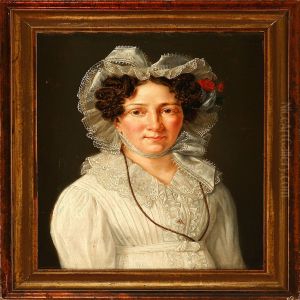Carl Goos Paintings
Carl Ludvig Messmann Goos was a Danish portrait painter born on March 19, 1797, in Copenhagen, Denmark. He was one of the prominent artists in Denmark during the first half of the 19th century, known for his fine portraits, which were in high demand among the Danish bourgeoisie and the royal family. His artistic talents became evident at an early age, and he was enrolled in the Royal Danish Academy of Fine Arts where he studied under the guidance of Christian August Lorentzen and Christoffer Wilhelm Eckersberg.
During his formative years at the Academy, Goos won several awards for his work, including the small gold medal in 1820 and the large gold medal in 1823, which was one of the highest recognitions for a young artist in Denmark. In 1822, he received a travel grant which allowed him to study abroad. He spent considerable time in Paris, where he was influenced by the works of French painters such as Jacques-Louis David and François Gérard. He also spent time in Italy, where he drew inspiration from classical art and the Italian masters.
Upon his return to Denmark, Goos quickly established himself as a successful portrait painter. He became a member of the Academy in 1834 and later a professor in 1845. His portraits were known for their realism and attention to detail, often capturing the personality and social status of his sitters. Goos’ ability to depict fabrics and textures was particularly admired, contributing to the lifelike quality of his portraits.
Carl Goos continued to paint and teach throughout his life, influencing the next generation of Danish artists. His works can be found in various museums, including the Statens Museum for Kunst (the Danish National Gallery) and the Frederiksborg Museum. Goos died on November 7, 1855, in Copenhagen. His legacy is preserved in the numerous portraits that provide a window into Danish society during his lifetime.
